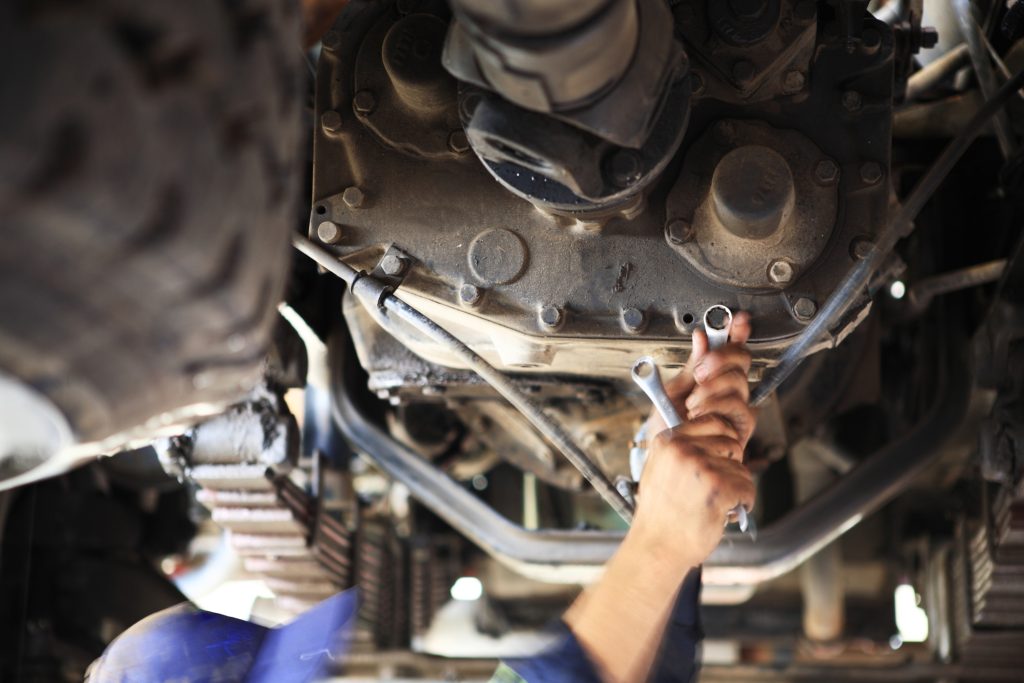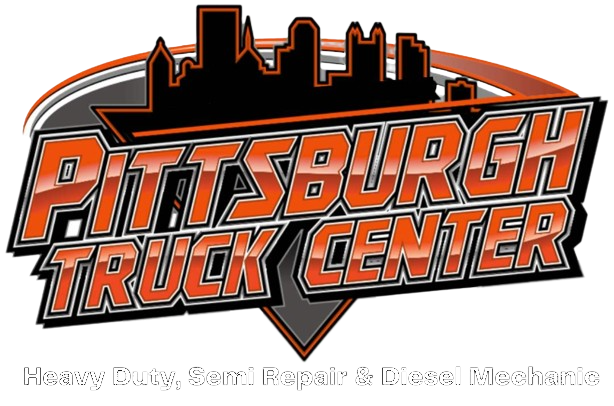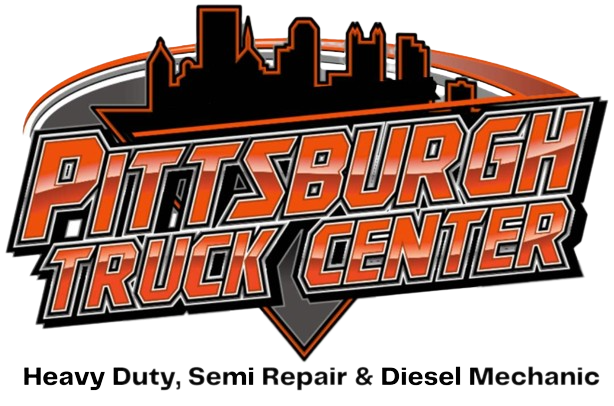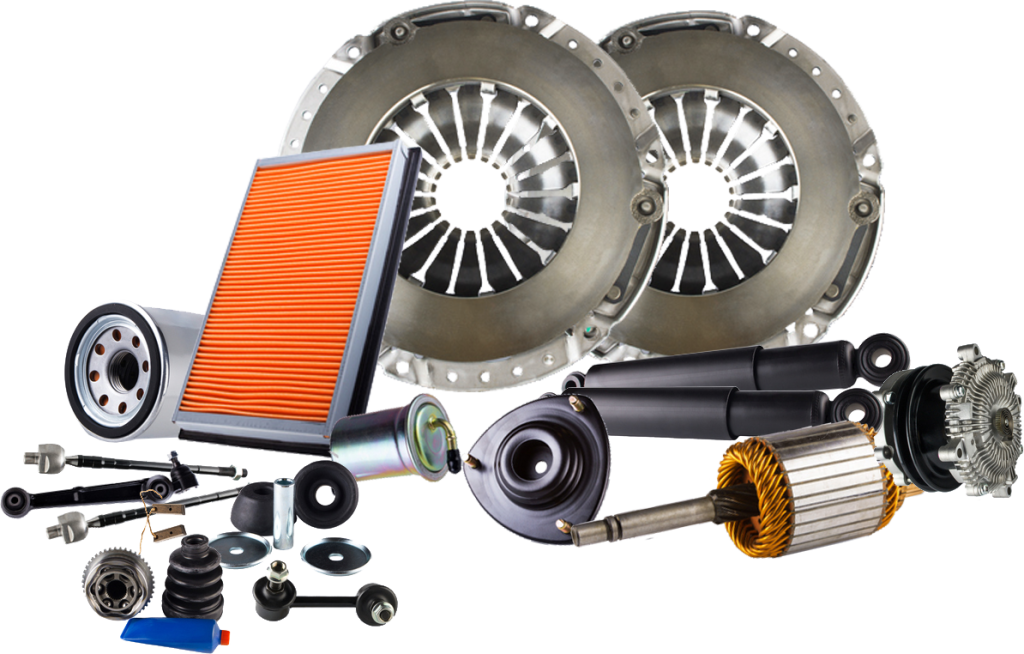PREVENTATIVE MAINTENANCE
PREVENTATIVE MAINTENANCE SERVICE
Request Service →

Contact the Shop
PREVENTATIVE MAINTENANCE
CREATING A PREVENTATIVE MAINTENANCE CHECKLIST
Pittsburgh Truck Center created this maintenance checklist overview to help guide you in understanding how to care for your semi, tractors. Creating an effective preventative maintenance checklist is essential for keeping the process in check and under control. To ensure success, it’s important to keep the list concise and not try to focus on too many things at once. Additionally, you should include every part, even the smallest nuts and bolts, in your checklist.
Having access to original equipment manufacturer (OEM) manuals is also necessary for creating an effective checklist. Furthermore, you should review historical records of your fleet and factor in any instances of using non-original parts that are not mentioned in the OEMs.
PREVENTATIVE MAINTENANCE
ACTIVITIES FOR A PREVENTATIVE MAINTENANCE CHECKLIST FOR SEMI-TRUCKS
Creating a preventative maintenance checklist for semi-trucks requires a range of activities. Here are some tips to include in your list:
- Make a Fleet Inventory – Record the VIN, brand and model, year of acquisition, and current mileage of each vehicle.
- Engine – Inspect the engine for oil, fuel, and coolant leakages; check power steering level; examine radiator mounting for cracks or looseness; test antifreeze protection; inspect coolant hoses and cooling system; inspect coolant recovery and pressure test radiator cap; check engine wire seals and connectors for damage.
- Check Fluid Levels – Verify the levels of engine oil, brake oil, coolant or antifreeze, and power steering.
- Changing Fluids – Follow the manufacturer’s guidelines for changing fluids based on distance driven and weight of load carried by the truck. Instruct drivers not to compromise on quality or brand of fluids in case of top-up requirement during journey.
- The Air Filter: An Essential Part of Vehicle Maintenance
The air filter is a key component of vehicle maintenance. It serves to protect the engine and oil from outside particles and pollutants that can cause damage over time. As the air filter becomes clogged, it reduces the amount of air entering the engine, thus impacting its performance. The frequency with which you should change your air filter depends on the type of routes your truck takes. If you drive in less polluted cities, it should be changed after 20,000 miles. However, if you take dusty roads, it should be changed between 10,000 and 15,000 miles.
PREVENTATIVE MAINTENANCE
INSPECTING BRAKES: A VITAL PART OF VEHICLE MAINTENANCE
The brakes take the brunt of wear and tear, so monitor closely and replace as soon as signs of wear show up. There are two types of brakes: air brakes and hydraulic brakes and the following checklist will help:
Air Brake Inspection
- Inspect air lines and front brake chambers
- Inspect front brake lining/pad condition and thickness
- Inspect front brake drum/rotor condition
- Perform ABS (Anti-lock brake) self-test
Hydraulic Brake Inspection
- Inspect master cylinder and fluid condition
- Inspect both front & rear brakes and lines
- Inspect front brake lining/pad condition and thickness
- Inspect all valves, hydraulic lines, hoses, and fittings for leaks
PREVENTATIVE MAINTENANCE
TIRE MAINTENANCE
Tires are prone to wear and tear, so frequent inspections are necessary. Look for bulges, uneven wear, cuts, abrasions, and cuts on the tread area and sides of the tires. Use a tread depth gauge to check the tread depth and make sure it meets federal regulations. Additionally, semi-truck tires should be installed in trucks. Here are some inspections to perform as part of preventative maintenance:
- Inspect sidewall damage and cuts
- Check for irregular wear-out patterns
- Check wheel bearings and lube cap
- Record tire pressure
- Check for loose lug nuts
- Inspect damaged or cracked wheels
- Record tread design
- Check wheel bearings and axle flange seals for leakages
PREVENTATIVE MAINTENANCE
ELECTRICALS
Electricals are an important part of preventative maintenance. Make sure headlights, flashers, turn signals, and brake lights on the truck and trailer are in working order. Additionally, check for cracks or holes in the lens. Inspect all-around wiring in the truck for any cuts or abrasions. Replace batteries immediately if there is any leakage or corrosion.
PREVENTATIVE MAINTENANCE
IN-CAB INSPECTION
- Check ignition key and start button
- Inspect seat belts, seat suspension, and overall condition
- Test dash lights and gauge illumination
- Examine dash gauges
- Test horn operation
- Verify defroster and A/c heater controls
- Assess clutch pedals
- Evaluate steering operation
- Analyze parking brake operation
- Inspect wiper blades
- Review mirror & brackets
- Assess window glass and operation
- Lube doors
Truck Repair Services | Carnegie PA
Heavy Truck Repair
Workmanship & customer service are the cornerstones of our semi truck repair services. For top-rated heavy-duty semi truck repair services from the professional diesel mechanics at Pittsburgh Truck Center in Pittsburgh, PA, call today to schedule.
24/7 Breakdown Service
Workmanship & customer service are the cornerstones of our semi truck repair services. For top-rated heavy-duty semi truck repair services from the professional diesel mechanics at Pittsburgh Truck Center in Pittsburgh, PA, call today to schedule.
Preventative Maintenance
Pittsburgh Truck Center created this maintenance checklist overview to help guide you in understanding how to care for your semi, tractors. Creating an effective preventative maintenance checklist is essential for keeping the process in check and under control.
Fleet Repair & Maintenance
We're Pittsburgh Truck Center located at 73C Noblestown Rd, Carnegie, PA 15106. Call us at (412) 381-9401. Offering services for your Semi-Tractor Repair, Truck Repair, Semi Truck repair providing maintenance, service and breakdown emergency services for CAT, Cummins, Detroit engines and more.
DOT Inspections
An annual DOT inspection is required for all commercial vehicles over 10,001 lb operating in the United States. Also, An annual DOT inspection is required for all or vehicles transporting hazardous materials regardless of weight.
Diagnostics & Electrical Service
New technology makes the newest vehicles Our team specializes in finding solutions for complex and hard-to-diagnose problems, and we are committed to providing quality and efficient services to our clients.
Brake Repair
At Pittsburgh Truck Center, offers team offers complete medium, and heavy-duty commercial repair. Whether you need vehicle inspections, routine maintenance, or extensive repairs, our team of certified technicians will have you back on the road as quickly as possible.
Exhaust & Aftertreatment
Exhaust and aftertreatment issues can lead to decreased power, acceleration, fuel economy and usually cause unanticipated downtime for your truck.
Truck Alignment
Commercial trucks rely heavily on front-end alignment because the back wheels of the tandem axles must follow the front wheels' tracks. Misaligned tandem axles can cause your truck to drift off course, which can be dangerous when you're driving on the highway.
Transmission & Clutch Repair
Truck applications may have varying transmissions and clutch designs, but they all wear down over time, ultimately leading to failure. The longevity of your vehicle's clutch and transmission before requiring maintenance depends on several factors, such as traffic, road gradient, and the amount of weight you transport.
Suspension Repair
At Pittsburgh Truck Center, we provide expert service on all makes and models of light, medium, and heavy-duty trucks and trailers. Our highly trained and skilled certified technicians are experts at solving difficult-to-diagnose issues and are committed to providing our customers with quality work and prompt service.
Electrical Repair
We fix every issue from starter service to alternator repairs. Our team of ASE certified and DOT licensed electrical technicians are heavy-duty experts for your CAT, Cummins, International, Detroit Diesel, Hino, or Paccar engine.
Diesel Emissions
Pittsburgh Truck Center Diesel Dyno & Emissions offers certified diesel emissions testing alongside the most innovative dyno technology in Pennsylvania to review and improve your RPM’s, horsepower, fuel economy and torque.
EGR & DPF Cleaning & Repair
Diesel vehicles commonly encounter issues with their exhaust gas recirculation (EGR) and diesel particulate filter (DPF) systems, which are responsible for reducing carbon emissions. When these systems are not functioning optimally, they can add undue strain on your engine.
HVAC Systems Repair
The United States experiences weather extremes, with Michigan being a prime example. While summers can be scorching, winters can be bone-chilling. Warm weather is enjoyable by the beach but not when stuck in city traffic or on a long highway.



